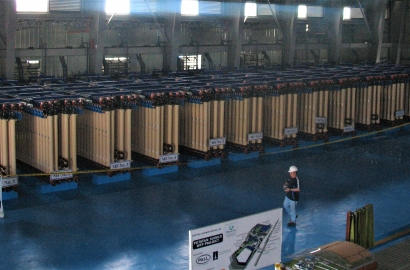APPLICATION OF ION EXCHANGE PLASTIC IN WATER TREATMENT

Ion exchange resin is a resin that acts as an ion exchange medium. It is a common insoluble matrix (or support structure) in a small form (0.25-0.5 mm radius), usually white or yellow, created from an organic polymer substrate. The particles are usually porous, providing a large surface area within them. Ion attraction occurs with the accompanying other ions, and thus the process is called ion exchange. There are many types of ion exchange resins. Most plastics today are made of polystyrene sulfonate.
Application:
- Water softeners

The Principle of Water Softening Plastic Beads
- Purify water
- High purity production
- Ion exchange in metal separation
- Purify juice
- Decolorization in sugar production
- Application in the pharmaceutical industry
Structure:
Typical ion exchange resins are based on bonded polystyrene. Also, in the case of polystyrene, crosslinking is introduced by copolymerisation of styrene and a few percent of divinylbenzene. Cross-linking reduces the ion exchange capacity of the resin and prolongs the time required to complete the ion exchange but improves the durability of the resin. The particle size also affects the resin parameters; Smaller particles have a larger outer surface, but cause a larger tip loss during columnation.
In addition to being made as a granular material, ion exchange resins are also manufactured as membranes. These ion exchange membranes, made of highly bonded ion exchange resins that can allow passage of ions, but not water, are used for electrolysis.
Classify
- Cationic plastic beads
- Anion resin beads
- Mixbed plastic beads

Anion Resin and Cation Resin are the two most commonly used resins in ion exchange. While anionic resins attract negatively charged ions, cationic resins attract positively charged ions. The mixbed is amphoteric, attracting both positive and negative ions
Related News

Landfill leachate treatment technology: Disc Tube RO (DTRO)
09/12/2021Landfill leachate treatment technology which easy to maintance, operating and suitable for high pollutants waste water

USD 100 Million Sewage Treatment Plant In Ho Chi Minh City
22/02/2021Binh Hung wastewater treatment plant, which has the function of treating wastewater from Tau Hu - Ben Nghe canal basin - Kenh Doi - Kenh Te, includes districts such as: District 1, District 2, District 3 and a part of Q.10.

SOLUTIONS FOR HARD WATER
29/07/2021Hard water contains high levels of Calcium and Magnesium ions. It is the cause of scale in civil equipment as well as in industry.

SOLUSION FOR DRINKING WATER CONTAMINATED WITH IRON
29/07/2021Using water contaminated with Iron greatly affects the health as well as activities of people and production in enterprises. Iron-contaminated water treatment is always a top priority.



